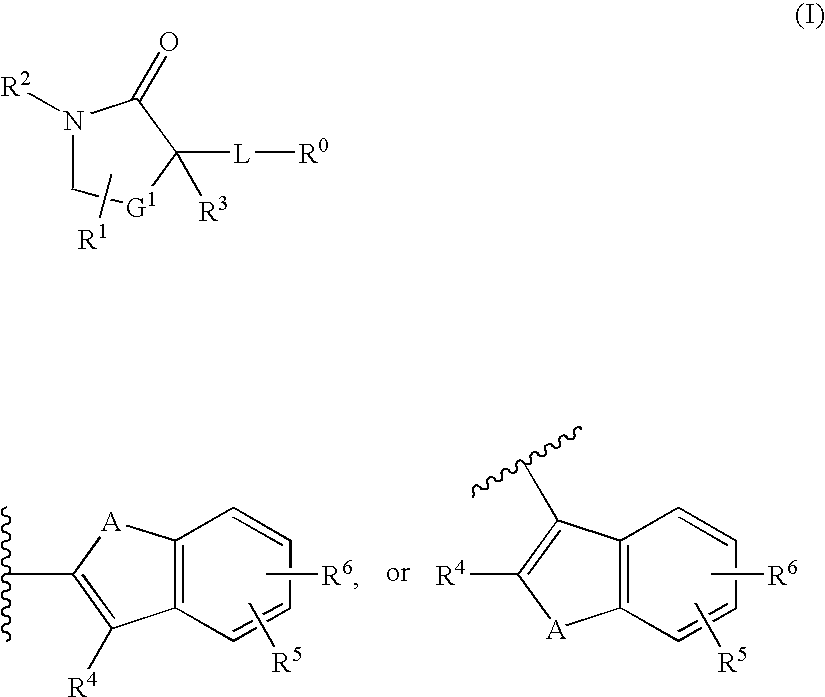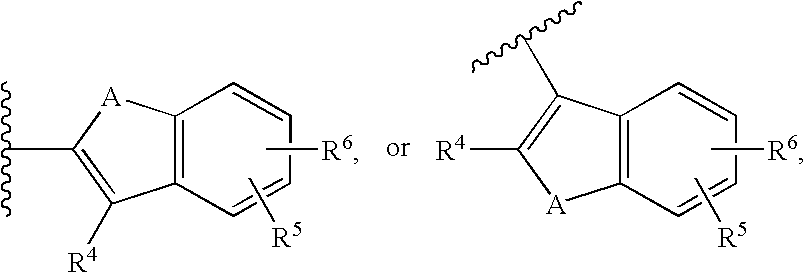Cycloalkyl lactam derivatives as inhibitors of 11-beta-hydroxysteroid dehydrogenase 1
a technology of cycloalkyl lactam and dehydrogenase 1, which is applied in the direction of drug compositions, biocide, metabolic disorders, etc., can solve the problems of reduced beta-cell function, reduced oxidation of glucose and glycogen in muscle, and insufficient activation of glucose uptake, so as to prevent apoptosis, improve beta-cell function, and improve fasting glucose
- Summary
- Abstract
- Description
- Claims
- Application Information
AI Technical Summary
Benefits of technology
Problems solved by technology
Method used
Image
Examples
preparation 1
1-(trans-4-hydroxy-cyclohexyl)-pyrrolidin-2-one
[0291]
[0292]Add trans-4-aminocyclohexanol (230 g; 2.0 mol) to γ-butyrolactone (140 mL; 1.82 mol) in a 1 L round-bottom flask equipped with large magnetic stirrer, thermometer and condenser / nitrogen bubbler. Heat at 190° C. for 68 hours. Cool to ambient temperature and dissolve in water (1 L). Extract into dichloromethane (10×1.5 L). Dry the extracts over magnesium sulfate, filter and evaporate to a brown solid. Triturate with diethyl ether to afford 144.7 g (43%) of the title compound: LC-MS (M+1=184).
preparation 2
cis-4-Nitro-benzoic acid 4-(2-oxo-pyrrolidin-1-yl)-cyclohexyl ester
[0293]
[0294]Dissolve 1-(trans-4-hydroxy-cyclohexyl)-pyrrolidin-2-one (preparation 1) (144 g; 0.79 mol) in dry tetrahydrofuran (5 L) and cool to −5° C. under nitrogen. Add triphenylphosphine (310 g; 1.185 mol) and 4-nitrobenzoic acid (198 g; 1.185 mol). Add diisopropyl azodicarboxylate (230 mL; 1.185 mol) drop-wise and stir at room temperature overnight. Add saturated aqueous sodium hydrogencarbonate (1 L) extract into dichloromethane (2×2.5 L) in a 20 L separating funnel. Dry the combined organic layers over magnesium sulfate, filter and concentrate. Purify over silica gel (iso-hexane / ethyl acetate 50-100% then 10% methanol in ethyl acetate) to afford 163 g (62%) of the title compound.
preparation 3
cis-1-(4-hydroxy-cyclohexyl)-pyrrolidin-2-one
[0295]
[0296]Dissolve cis-4-nitro-benzoic acid 4-(2-oxo-pyrrolidin-1-yl)-cyclohexyl ester (preparation 2) (87.9 g; 264 mmol) in methanol (1.35 L) and water (150 mL) and add potassium carbonate (109.5 g; 800 mmol). Stir at room temperature overnight to give a white precipitate. Evaporate to dryness. Azeotrope with ethanol (×2). Stir in tetrahydrofuran (1 L) for 1 hour then filter. Evaporate the filtrate to an oil and crystallize from diethyl ether (100 mL) to afford 40 g (83%) of the title compound.
PUM
| Property | Measurement | Unit |
|---|---|---|
| temperature | aaaaa | aaaaa |
| particle size | aaaaa | aaaaa |
| temperature | aaaaa | aaaaa |
Abstract
Description
Claims
Application Information
 Login to View More
Login to View More - R&D
- Intellectual Property
- Life Sciences
- Materials
- Tech Scout
- Unparalleled Data Quality
- Higher Quality Content
- 60% Fewer Hallucinations
Browse by: Latest US Patents, China's latest patents, Technical Efficacy Thesaurus, Application Domain, Technology Topic, Popular Technical Reports.
© 2025 PatSnap. All rights reserved.Legal|Privacy policy|Modern Slavery Act Transparency Statement|Sitemap|About US| Contact US: help@patsnap.com



